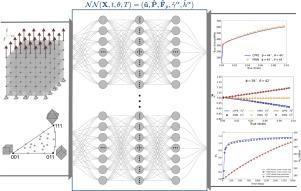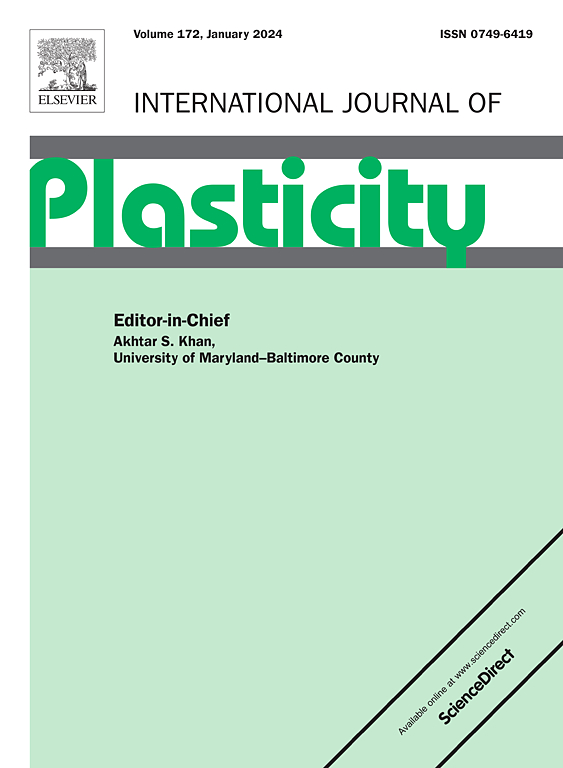Advancing material simulations: Physics-Informed Neural Networks and Object-Oriented Crystal Plasticity Finite Element Methods
IF 9.4
1区 材料科学
Q1 ENGINEERING, MECHANICAL
引用次数: 0
Abstract
An innovative method for predicting the behavior of crystalline materials is presented by integrating Physics-Informed Neural Networks (PINNs) with an object-oriented Crystal Plasticity Finite Element (CPFE) code within a large deformation framework. The CPFE platform is utilized to generate reference data for training the PINNs, ensuring precise and fast predictions of material responses. The object-oriented design of the CPFE system facilitates the coherent incorporation of complex constitutive models and numerical methods, enhancing simulation flexibility and scalability. To demonstrate the adaptability of this approach, two problems are addressed: a fundamental power-law and a complex dislocation density-based constitutive models for predicting the behavior of -based alloys. Both models are implemented within an object-oriented CPFE system powered by its flexible plug-in architecture. The resulting PINN model accurately captures intricate deformation mechanisms in crystalline materials, as validated through comparisons with CPFE simulations and experimental data. This work offers a promising alternative for efficient and accurate material behavior prediction, paving the way for advanced simulations in materials science.


先进的材料模拟:物理信息神经网络和面向对象的晶体塑性有限元方法
提出了一种预测晶体材料行为的创新方法,即在大变形框架内将物理信息神经网络(pinn)与面向对象的晶体塑性有限元(CPFE)代码相结合。CPFE平台用于生成用于训练pin的参考数据,确保准确快速地预测材料响应。CPFE系统的面向对象设计有利于复杂本构模型和数值方法的连贯结合,提高了仿真的灵活性和可扩展性。为了证明这种方法的适应性,我们解决了两个问题:用于预测ni3alni3al基合金行为的基本幂律和基于复杂位错密度的本构模型。这两个模型都是在一个由其灵活的插件体系结构提供支持的面向对象的CPFE系统中实现的。由此产生的PINN模型准确地捕获了晶体材料中复杂的变形机制,并通过与CPFE模拟和实验数据的比较进行了验证。这项工作为有效和准确的材料行为预测提供了一个有希望的替代方案,为材料科学的高级模拟铺平了道路。
本文章由计算机程序翻译,如有差异,请以英文原文为准。
求助全文
约1分钟内获得全文
求助全文
来源期刊

International Journal of Plasticity
工程技术-材料科学:综合
CiteScore
15.30
自引率
26.50%
发文量
256
审稿时长
46 days
期刊介绍:
International Journal of Plasticity aims to present original research encompassing all facets of plastic deformation, damage, and fracture behavior in both isotropic and anisotropic solids. This includes exploring the thermodynamics of plasticity and fracture, continuum theory, and macroscopic as well as microscopic phenomena.
Topics of interest span the plastic behavior of single crystals and polycrystalline metals, ceramics, rocks, soils, composites, nanocrystalline and microelectronics materials, shape memory alloys, ferroelectric ceramics, thin films, and polymers. Additionally, the journal covers plasticity aspects of failure and fracture mechanics. Contributions involving significant experimental, numerical, or theoretical advancements that enhance the understanding of the plastic behavior of solids are particularly valued. Papers addressing the modeling of finite nonlinear elastic deformation, bearing similarities to the modeling of plastic deformation, are also welcomed.
 求助内容:
求助内容: 应助结果提醒方式:
应助结果提醒方式:


